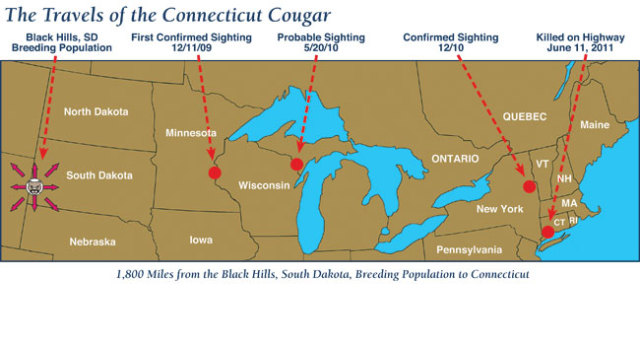#hope this answered your question
“Not sure if you’ll know anything about this but it’s worth a shot! So, in my conservation bio class today, we got to the topic of animals being extinct and the eastern mountain lion. I go to college in the mountains but according to my teacher many locals claim to have seen mountain lions and even a student has seen one. I was wondering, even if there is a small population of eastern mountain lions, would they only be taken off the extinct list only after proper evidence was given and they’re shown to be able to grow or is it likely a species like that is too small to come back from extinction?”
If it was able to be definitively proved that animals in the eastern mountain lion subspecies were still alive today, they’d no longer be considered extinct. That’s all that goes into that decision. That doesn’t mean they’d inherently have any protections under federal law or anything, however, because as an extinct subspecies they were delisted from the Endangered Species Act in 2018.
An analysis of over 100 credible studies covering over 100 years led US Fish and Wildlife to determine that eastern mountain lions have probably been extinct for decades - plausibly since before the Endangered Species Act was even passed. Here’s their statement on what they found from a media release sent out in 2018 when the official de-listing occurred: “Accounts suggest that most eastern cougars disappeared in the 1800s, killed out of fear for human and livestock safety and were victims of massive deforestation and overharvesting of white-tailed deer, the cougar’s primary prey. The last records of eastern cougars are believed to be from Maine (1938) and New Brunswick (1932)”
But! That doesn’t mean the reports of local cougars sightings are incorrect! (Although, they can be, people do tend to see smaller wildcats and immediately think mountain lion). Here’s the thing: western cougar populations are recovering very well, and so a lot of documented cougar sightings in the eastern part of North America are thought to be western cougars dispersing eastward. There’s good data for this in peer-reviewed studies, such as this one discussing the recolonization of southwest Saskatchewan and southeast Alberta from 2015.
Probably the most notable example of this long-range dispersal was a young male cougar who was hit by a car in Connecticut, of all places, in 2011. That’s so far east of what was thought to be their current range that it was pretty widely assumed the cat had to be an escaped exotic pet. But no! Camera trap data confirmed that the same individual had been seen making his long trek, and genetic analysis confirmed that he was originally from the Black Hills population in North Dakota.

A lot of cougar sightings in the Midwest and points further east are - as with the 2011 cougar - assumed by the media to be escaped captive animals. A couple of years ago I analyzed the last 20 years of publicly available data from advocacy orgs that track big cat escapes and attacks, and a large percentage of the sightings of loose cougars seemed likely to be dispersed wild animals: they didn’t fit the patterns you see around captive exotic pet escapes nor did the cats behave like animals habituated to people, they almost always occurred in suburban developments that were situated right next to large patches of open land and/or protected areas, and they were generally within the geographic areas where dispersal has been increasingly documented. Most supposed cougars were seen once in passing, or only a few times, and generally never were a nuisance enough to be caught or killed (excepting the ones hunting domestic animals or the ones that got hit by cars). In some cases, it was really obvious they were wild: there was one incident in McGregor, MN in 2001 where a female cougar was found attacking a dog in a suburb right next to a wildlife preserve, and two very young cubs were sighted in the area a few days later. A lot of times, local wildlife officials couldn’t confirm any formal reintroductions of cougars into the area and/or referred to historical data for eastern cougar sightings when discussing the most recent sightings of wild cats in the area - so with that ruled out by the easily accessible local experts, local media defaulted to “probably a pet.”
Over the years, I think the general awareness that cougars are dispersing farther east has become somewhat more common due to major outlets like the New York Times covering stories like the 2011 dispersal. But as you mentioned, on a community level, it’s still sort of like a cryptid sighting! People know that cougars don’t exist outside of western North America and Florida anymore, so why do they keep seeing them?
So no, unfortunately, it’s pretty unlikely Eastern mountain lions are extant at this point - but that doesn’t mean that other mountain lions aren’t expanding into the lands they used to roam.
